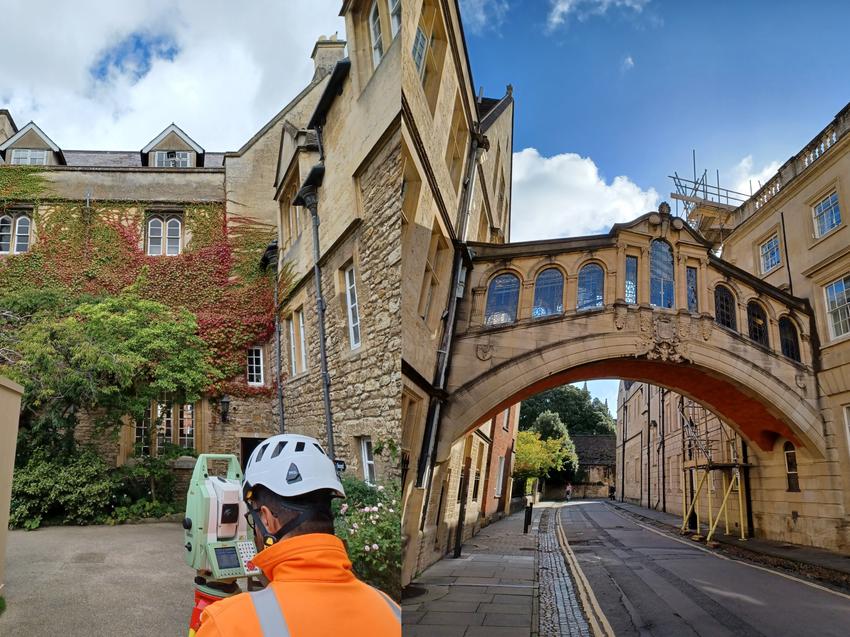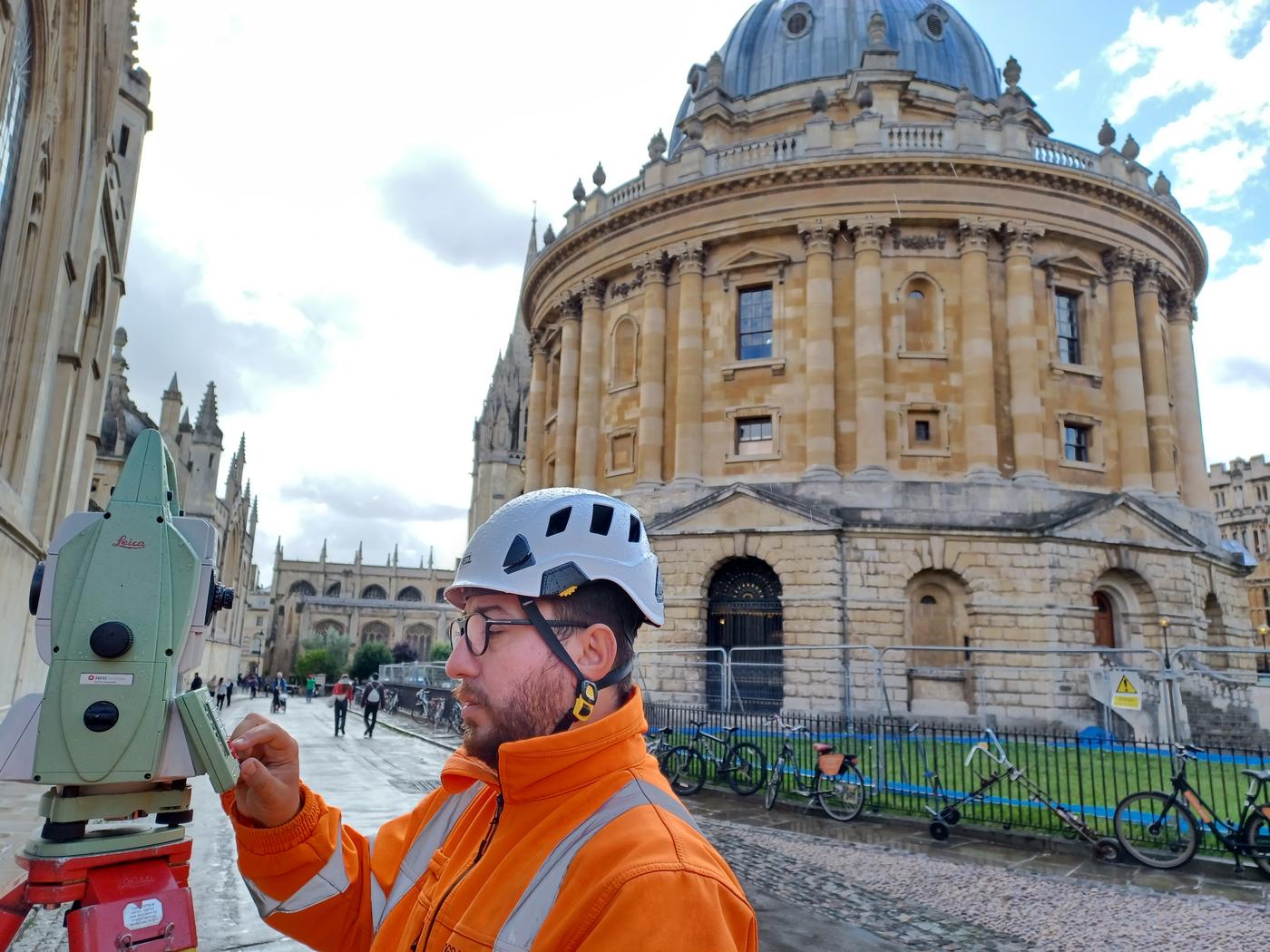GEO-Instruments UK are providing the monitoring scheme for the redevelopment of Hertford College, part of Oxford University.
The college is located in the historic centre of Oxford, among other University buildings and directly next to the iconic Bodleian Library.

The redevelopment will significantly upgrade the library, archive, study and meeting spaces of the college.
The redesign includes a new basement extension into the old quadrangle that the college buildings are centred around. This basement will contain new student facilities as well as archive, reading and seminar rooms. The existing library will be expanded and connected to the neighbouring college buildings.
Planned works will also make improvements to the accessibility and energy efficiency of the existing buildings.

In order to meet project specifications the monitoring scheme had to provide detailed, non-intrusive monitoring of the historically significant buildings.
The specification required structural monitoring of building movement and vibration monitoring to measure the impact of demolition and excavation works.
Later stages of the project will require deformation monitoring of the basement walls during excavation.
GEO-Instruments’ monitoring scheme combines manual 3D surveys undertaken weekly with Manual Inclinometer readings and automated 24-hour vibration monitoring.
For a complete picture of Three-Dimensional movement of the structure, more than 150 Retro-reflective targets were placed on the walls of the exterior of the college and the interior courtyard.
Placed in arrays of high and low targets, the retros are measured manually via a Total Station survey. Retro-reflective targets were chosen as they can be attached to the structure without damaging the building’s façade by drilling.
Set up of survey control for the targets posed a challenge due to the enclosed nature of the college’s old quadrangle. Surveyors begin outside of the college to take measurements of fixed reference points and then traverse into the quadrangle via the entrance archway.


For vibration monitoring, five specialised C22 automated vibration sensors are installed at key areas inside the college.
These highly sensitive instruments are self-contained units containing a long-lasting battery and internal sim card for data transfer.
The C22s were installed using specialised plates to ensure level placement and good transfer of vibration from the installed surface.
Five manual inclinometers will be installed around the basement to a depth of 12 metres. Regular readings will allow the detection of changes in the profile of the basement walls as the excavation progresses.
The setup of survey control and installation of Vibration sensors was undertaken in September this year. The Inclinometers will be installed in the first quarter of 2025. Manual and automated monitoring is expected to continue alongside the redevelopment works until late 2026.
Learn about another monitoring project at Oxford University.